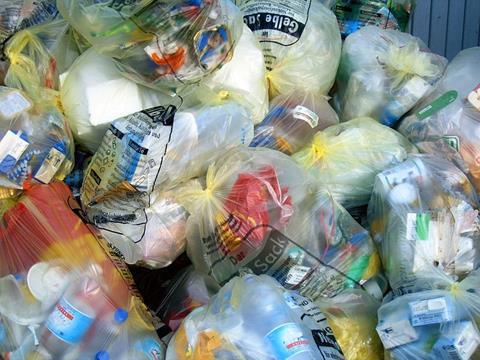
The Forum for EPS Recycling, EPSY, organised within the IK Industrievereinigung Kunststoffverpackungen e.V. (German Association for Plastics Packaging and Films), and the airpop expert group emphasise that airpop can be recycled and is being recycled successfully.
The recycling rate for airpop packages is around 50 per cent in Germany (Conversio study) – an exemplary result compared with the rest of Europe, and one that is being successively extended. The industry is working hand in hand with all participants in the value chain on solutions for the small volumes from the yellow sack scheme that are not yet recycled.
Expanded polystyrene (EPS), which provides convincing protective and insulating functions with regard to sustainability in the first stage of its useful life, can also be used as a secondary raw material for recycling even after at the end of its useful life. However, the “Guidelines for assessing the recyclability of packaging subject to mandatory participation in a dual system” published by the Central Packaging Registry Office (ZSVR) are causing uncertainty. EPS is excluded from the group of good materials, and is thus by definition categorised by the Central Office as not recyclable.
“The classification of airpop as non-recyclable is based on purely commercial decisions by the sorting companies,” emphasises Mara Hancker, Head of PR at IK Industrievereinigung and contact person for the airpop expert group. “First, the quantities that find their way into the yellow sack are small, and second, the material delivers excellent results in energy recovery. This classification has nothing to do with the actual physical recyclability of the material.”
Classification contradicts reality
In practice, the non-recyclable categorisation is tantamount to the packaging material being downgraded. “The, in our view, unjustified stigmatisation of the material despite its ecological benefits puts it at a disadvantage compared with other materials,” Mara Hancker adds. The classification is having an unsettling effect on relevant industries. “Substitution with ecologically disadvantageous materials is not in the interest of the environment and also not in the spirit of the Packaging Act.”
Already high level of recycling Commercial collection already proves that recycling can work smoothly. Around 80 per cent of airpop volumes currently in the market do not enter the yellow sack scheme via private households. The majority of it is collected by manufacturers in the main areas of use of white goods and furniture and passed on to specialist recyclers. The overall recycling rate of airpop is around 50 per cent in Germany. Used airpop packages become new airpop applications following processing.
New ways from airpop from the yellow sack scheme
The airpop expert group wishes to further expand EPS recycling and actively shape the airpop loop. For this reason, it is supporting the development of innovative recycling processes like the EU-funded PolyStyrene Loop or the Canadian PolyStyvert process. For example, a PolyStyvert trial is current under way in Canada using airpop packages separated out of the yellow sack scheme in Germany. Chemical recycling by the raw material producing industry is also being intensively pursued as a special option for high-quality recycling. Work is also being performed on solutions at an international level via the European association EUMEPS.











